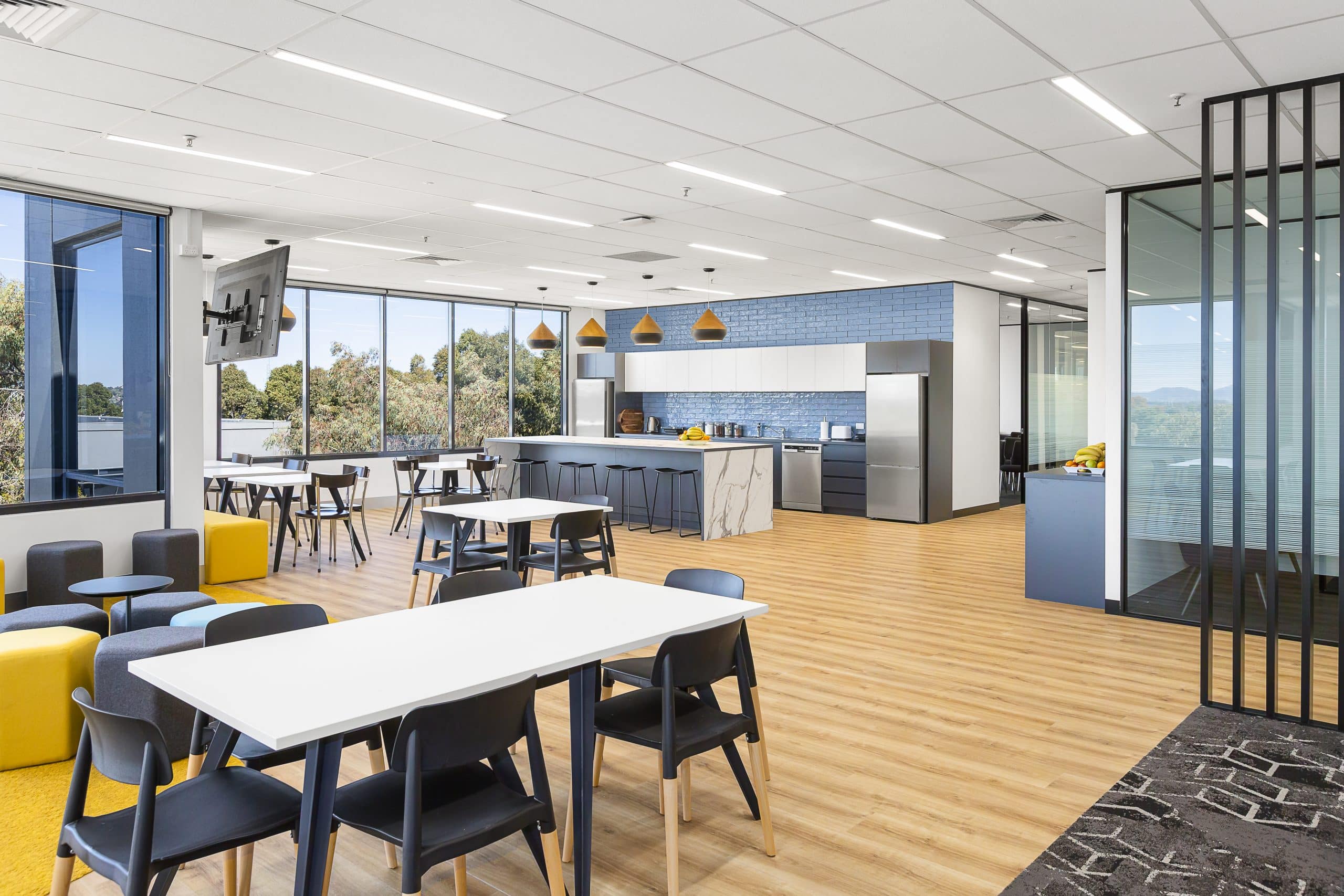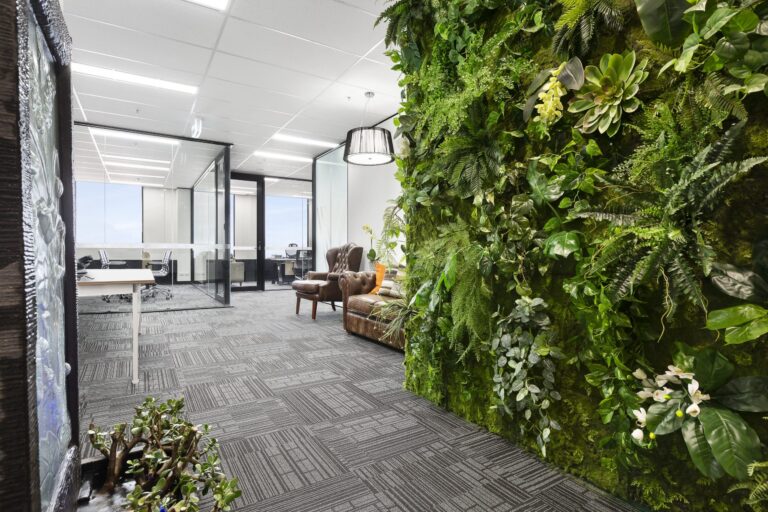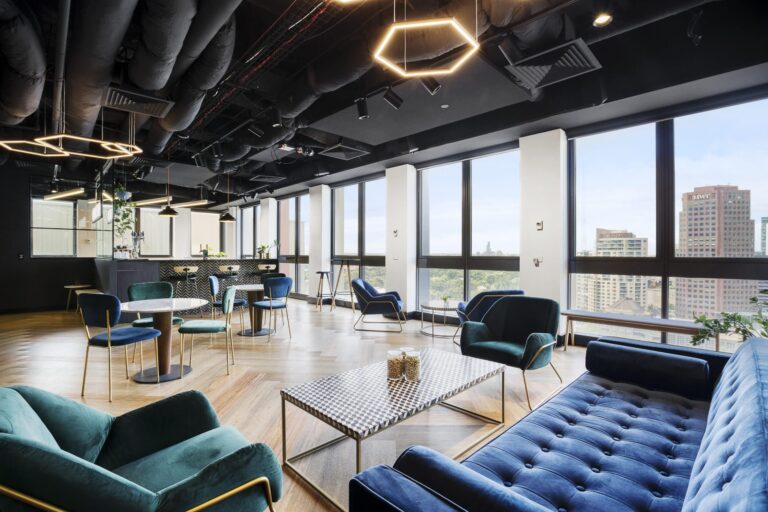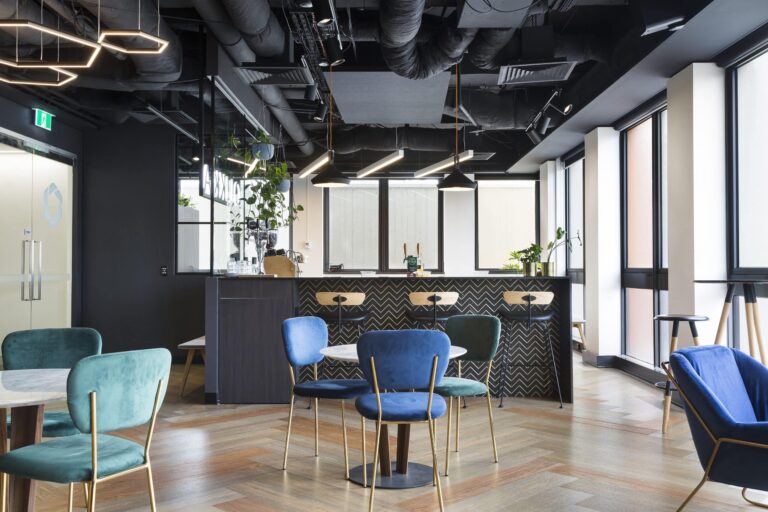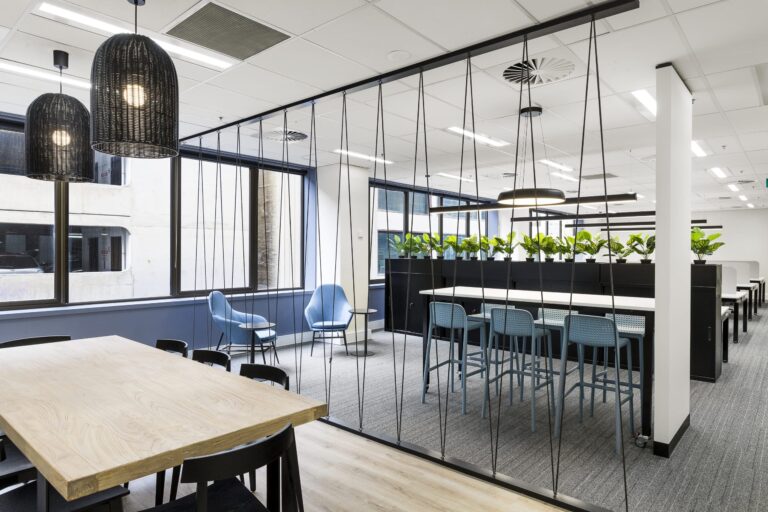It’s also at the core of the modern office. Today’s corporate environment values collaboration, with employees gravitating towards breakout spaces for one-to-ones, informal chats and thoughtful meetings, so it’s no wonder the kitchen has become a critical element within the workplace.
Designing a communal kitchen is no easy task, there are endless elements to consider, from products, type, colour, to functionality and branding. These days, kitchens also often merge with breakout and collaborative spaces, so when planning an office kitchen, you need to consider the structural details as well as the aesthetics.
Follow these 6 key principles to optimise the design of your next office kitchen.
1) Space
Office kitchens are a communal space where everyone comes together to eat, socialise and prepare. Hence, ample space should always be provided within a kitchen to allow for movement, food preparation, cooking and socialising.
This is not only limited to worktop space, but also circulation space within the area. Ensure the number of people using the kitchen at one time is taken into account while designing so the correct amount of space can be provided.
2) Storage
Adequate storage space is important, and needs to be included in the planning phase, to ensure there is enough room to place food, utensils, supplies, communal equipment e.g. microwave, dishwasher, fridge and coffee machine.
Well organised storage spaces can optimise the space within a kitchen and reduce the time spent looking for items, while creating an environment that benefits all team members.
3) Ease of Cleaning
This can often be overlooked when designing a kitchen but can become a huge problem if not taken into consideration. Kitchens can get messy, especially communal ones, so it is important to select materials that can be cleaned and easily maintained for the future. For example, marble is a popular choice, but be cautious in a commercial environment, as the marble lines can easily absorb spillage and need to be cleaned straight away. However, the beautiful marble pattern can now be re-created with a laminate, which is hard-wearing, easy to clean, and maintain for years to come.
4) Material Placement
When designing a kitchen, it is vital to take into consideration where you are placing materials. Due to the nature of a kitchen there are areas which could be subjected to high levels of heat and prolonged periods of being wet. It is important therefore when designing a kitchen to take these issues into consideration when choosing what materials, you will be using and where they are to be placed.
5) Enhanced Lighting
There are 3 types of lighting used within a well-designed kitchen;
a) Basic or ambient illumination which provides the general lighting of the area and affords a uniform level of illumination throughout the space.
b) Task lighting which sheds light on the tasks a person carries out in a given space, offering a higher level of light for focused work.
c) Accent lighting which is often used to highlight a design feature by adding dimension, focus on a specific point of interest, or to achieve a desired lighting effect.
A combination of these 3 types of lighting used in conjunction, help to enhance the visual impact and usability of a kitchen.
6) Arrangement/ Layout
Most designers agree that the “Work Triangle” represents the golden rule when it comes to the layout of a kitchen. The 3 points of this triangle are storage, preparation and cooking. In practical terms these points are usually represented within a kitchen by the refrigerator (food storage) the sink (washing and peeling of food) and the stove (or in an office situation, the microwave). Drawing a line between these three elements in any kitchen creates what’s known as the traditional kitchen work triangle. In an ideal kitchen, you should be allowed to move completely unrestricted between these three parts of the kitchen. Generally speaking, it is ideal to have 3 – 4 steps between each of these points within the kitchen.
By taking into account each of these principles, you will emerge with a kitchen design that that fulfils both functional and aesthetic requirement, while providing a comfortable space for staff encouraging on-going collaboration for the lifetime of your fitout.

